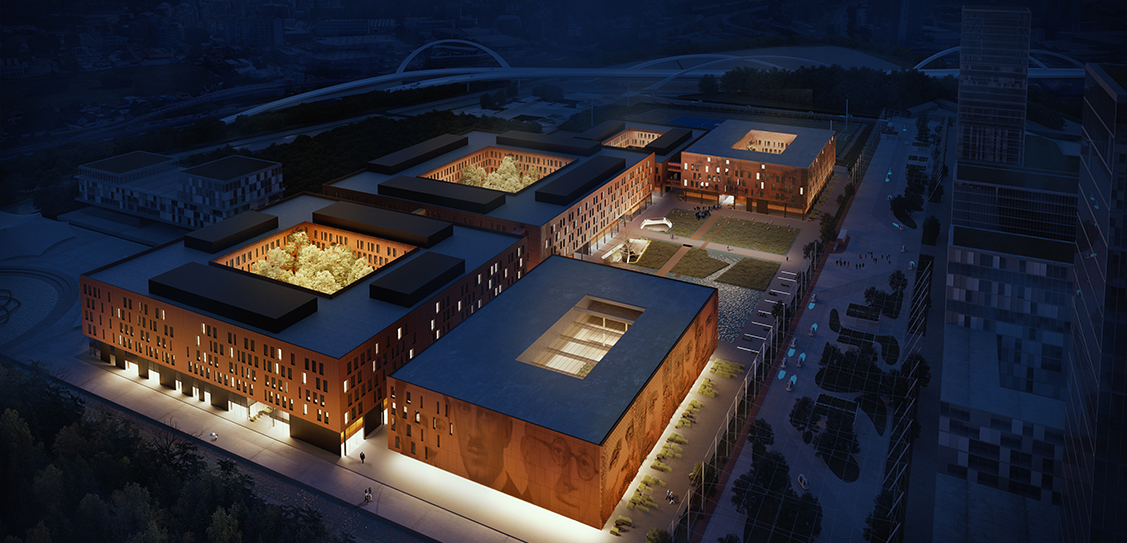Located in the Milano Innovation District (MIND), a one million square metre innovation park whose masterplan was also developed by Carlo Ratti Associati, the new campus is set to open in 2025.
The campus will extend more than 190,000 sq m and will serve approximately 23,000 researchers and students specialising in natural and formal sciences at the University of Milan. The design, developed by Carlo Ratti Associati in collaboration with architect Italo Rota, revolves around a network of green courtyards, a series of uninterrupted walking paths, “common ground”, at different heights, and five brick buildings. It also features a large central square with an adjacent lake.
The buildings pay tribute to the Ca’ Granda, the 15th Century brick building designed by the Renaissance architect Filarete, which today hosts the central seat of the University of Milan. The facades have been designed with an innovative construction technique, with each brick individually positioned by a robotic arm and treated as a pixel within a large-scale bas-relief. The result will be a three-dimensional tapestry with textual and visual content.
The project’s main typological features, the courtyards and the “common ground”, are also inspired by the Ca’ Granda, which was the closest realisation of Filarete’s vision for a utopian city that he called Sforzinda. The “Campus 2.0” reinterprets Filarete’s design principles, albeit with 21st Century digital technologies and new approaches to teaching and learning.
One of the project’s defining features is the "common ground", a public space that winds its way across the campus. This uninterrupted set of walkways and crossings connect the buildings and meanders across courtyards. The “common ground” allows people to walk outdoors all year long, under a canopy or portico, over a length of more than 1,200 m. The path continues inside the buildings, with an additional 800 m of accessible walkways at the mezzanine level. The “common ground” serves to reinforce the connection between the Campus and the surrounding neighbourhood, fostering interaction between the academic community, and the companies and research and development centre that operate in the innovation district.
The campus also features almost 100,000 sq m of greenery, including terraces and hypogeum gardens located below the ground level. Each of the five courtyards will showcase a different landscape from Northern Italy, while the central square and lake can accommodate large events.



